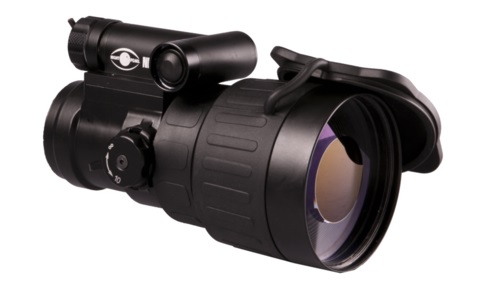Thermal units and night vision are two of the tools that more and more hunters are now using for their afterhours hunting in places where it is legal. However, despite playing a key role for successful night hunting, users must be familiar with the limitations and functions of these devices to fully take advantage of them during a hunting situation.
Night Vision – What is It?
Before delving further into what nighttime vision is all about, first, it is best to know what it is all about and how this works. To put it simply, nighttime vision makes it possible for the human eyes to see things and surroundings at night.

These visions do it through accumulating ambient light invisible to the naked eye like infrared light then converts this into a type of visible light that can be seen through the optic. There are several available options for these units including binocular, monocular, gun-mounted optics, and goggles.
Below are a few tips to remember to ensure your success with the use of these units.
Avoid Excessive Exposure to Light
Night-vision units have the tendency to be temperamental when it comes to light transmission. Even though scopes are an optic that makes it seem like the hunters don’t get sufficient light, these units have been made in such a way that they can run and function even in the darkest possible situations.
Light exposure is similar to how you redline an engine. Brief and infrequent light exposure for several seconds will not damage the device since night optics uses high light shut off and auto-gating in many devices. However, since it is like redlining a car, you will only be able to do it several times this can reduce life expectancy or cause damage.
Just so you know, IR or infrared is a type of light that cannot be detected by both animal and human eyes since this exists outside the ranges of their visible spectrum of light. This is what makes it perfect for applications for night optics.
This is also similar to a flashlight been visible only with night vision. For this reason, if the source of IR illumination is excessively bright, this may end up washing out objects at close up ranges similar to normal light. Although it won’t necessarily end up harming the unit just like it would in the case of visible light, this may make your nighttime vision futile when you are out in the field.
Practice Adjusting in the Darkness
Training is crucial when using nighttime vision since it is never enough if you just train using the unit during daytime. As you will be operating by feel in the darkness, it would be better if you become more familiar with your unit during nighttime when you cannot see what you are doing. It is becomes even more important as you make adjustments to give room for different distances, change the color profile, or adjust zoom when hunting at night.
Maintain Good Eye Relief
When you use a night-vision device, your vision is not just limited in distance as this can also severely hamper your peripheral vision. This means that you need to be even more aware of the situation. Safety is extremely important when hunting at night. Limited visibility can reduce your awareness of the situation that can increase the risks of accidentally sweeping the muzzle or worse.
This reduction of peripheral vision can go up to 60%. Having said this, you need to keep your unit away at a good distance from the eye socket similar to a scope. This is because the limited viewing field means it is more likely for you to bump into something. When there is enough space between the device and you, you will be in the clear better since the unit got some give.
Give Your Eyes Proper Training
Since your eye muscles will be strained in picking up movement as you look through the unnatural filtered lens set, it is recommended that you exercise your eyes to get used to all the changes that you will experience as you look through your night-vision unit. It is recommended that you begin your first several hunts with half an hour behind your optic and another half an hour off of it. Increase the use by 15 minutes or so afterwards to prevent vision strain and headaches.
How About Thermal Optics?
Since night vision and thermal optics have different functions, there are also different applicable rules. Instead of accumulating light then channeling this to an optic for vision improvement, thermal optics pinpoint heat signatures from the objects then project these different temperature signatures as specific colors in the color scale.
Tips for Sight-In
There are several reasons why it can be a hassle to sight in the rifle with thermal optics. First is the issue of heat signature detection from a paper target. While zeroing, it is recommended to use a cooking pan or pie tin as a target since metal is going to show another heat signature in the optic different from that of the surrounding temperature. It can also be a pain to sight in thermals because of the refresh rate or calibration of thermal sensors that create the images viewed in the optic.
Continuous calibration will be able to lessen the delay time that can simplify sighting. But, the manual freeze function can also be used to zero the unit much easily. In order to it, you need to aim at the center of the target, fire a round, get the image frozen then tweak the crosshairs to the impact of the projectile. As for thermal optics that doesn’t have continuous calibration, avoid shooting when the unit is frozen and wait for one to two seconds as this tries recalibrating.
Target Identification
Unlike night vision, thermal options don’t work as detailed tool for imaging. For instance, color shades don’t show up on thermals similar to how they do in a night-vision unit. It is because thermal doesn’t work on night reflection but off heat instead. This means that thermals should never be used for identifying targets. Although their resolution capacities are getting better, the quality of images is not yet that detailed for clear identification of targets.














